
As we’re starting Holy Week today, I thought it was fitting to celebrate with a bit of Easter fun – a Holy Week Wordsearch. It’s not very hard, so shouldn’t take you long. Have fun!
[Read More...]
As we’re starting Holy Week today, I thought it was fitting to celebrate with a bit of Easter fun – a Holy Week Wordsearch. It’s not very hard, so shouldn’t take you long. Have fun!
[Read More...]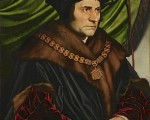
On this day in Tudor history, 13th April 1534, Sir Thomas More got into a spot of bother, or rather a lot of bother, when he refused to swear his allegiance to the Act of Succession. This act of defiance, or rather of his conscience, would, of course, lead to More’s execution in 1535.
[Read More...]
Just a reminder about tomorrow’s informal live chat on the merry subject of death and burial in Tudor times! Sorry about the topic! Still, it will be interesting to talk about the rituals associated with death and to share resources and book recommendations. Please do come, if you are able to.
[Read More...]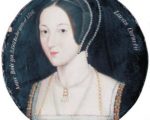
On this day in Tudor history, 12th April 1533, Anne Boleyn made her very first public appearance as King Henry VIII’s official queen consort.
Anne made quite an entrance! Accompanied by sixty ladies and “loaded with jewels”, she processed to Easter Eve mass at Greenwich Palace, setting tongues wagging.
Hear an account of this event in today’s video.
[Read More...]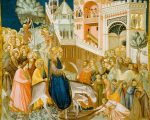
In this week’s Claire Chats, I talk about how Palm Sunday was commemorated in the medieval and Tudor periods, and how it is celebrated today where I live. I would love to hear how your community, church, or family mark this day, if they do.
[Read More...]
On this day in Tudor history, 11th April 1554, in the reign of the Catholic Queen Mary I, Sir Thomas Wyatt the Younger, son of poet and diplomat Sir Thomas Wyatt the Elder, was beheaded on Tower Hill after being found guilty of high treason.
Wyatt had led a rebellion which sought to depose the queen and to replace her with her half-sister Elizabeth, but he refused to implicate Elizabeth in the plot. He went to his death asserting her innocence.
Find out more about what happened and hear his final speech in today’s video.
[Read More...]
On this day in Tudor history, 10th April 1512, Margaret Tudor, Queen of Scots, eldest daughter of the late King Henry VII, and sister of King Henry VIII, gave birth to a boy who would become King James V of Scotland.
Find out more about James V, his life and reign, and his relationship with his uncle, King Henry VIII, in today’s video
[Read More...]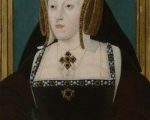
On this day in Tudor history, 9th April 1533, Catherine of Aragon, who’d been banished from the royal court, received a visit from a delegation of the king’s councillors. They were there to inform her that she was no longer queen.
Catherine was a tough cookie, though. Even when she was threatened by the king, she did not submit, she carried on calling herself queen right until the end – good for her!
Find out all about this visit, and their subsequent visit in July 1533, in today’s video.
[Read More...]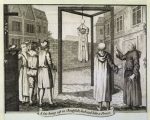
In today’s video, I talk about an act of rebellion in 1554, an act of defiance by someone opposed to Queen Mary I’s religious changes.
It was on this day in Tudor history, 8th April 1554, that a cat dressed as a Catholic priest and holding a piece of paper to represent the communion wafer, was hanged at the gallows in Cheapside.
Find out more about what happened, the meaning behind it, and Queen Mary I’s reaction to it, in my video.
[Read More...]
On this day in Tudor history, 7th April 1538, Elizabeth Boleyn, (née Howard), Countess of Wiltshire and Ormond, was laid to rest at St Mary’s Church, Lambeth.
In today’s video, I give details on Elizabeth’s burial and her resting place, which is now a Garden Museum, and her ledger stone. You can also see my photos of the former church.
[Read More...]
The topic of this week’s Sunday fun is not very nice I’m afraid – sorry! It’s a crossword puzzle on horrible deaths and executions that happened in the Tudor period.
Open and print out the crossword puzzle by clicking on the link below, or the image below, grab your favourite snack and drink, make yourself comfortable, and let’s get that brain working!
[Read More...]
Today is the anniversary of the death of Sir Francis Walsingham on 6th April 1590. Walsingham had an amazing career, serving Elizabeth I as a diplomat, secretary, adviser and spymaster.
Find out more about the man Elizabeth I called her “Moor” in today’s video.
[Read More...]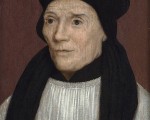
Sorry about the tongue-in-cheek title, but the cook of Bishop Fisher’s household really did get into hot water on this day in 1531 when he was boiled to death for high treason at Smithfield.
He was found guilty of high treason by an act of Parliament, but why? What happened and why did King Henry VIII take a personal interest in this case?
Find out all about Richard Roose and the case of poisoning in today’s video
[Read More...]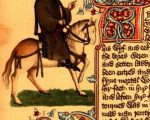
“The past is a foreign country”, so says the blurb for Ian Mortimer’s “Time Traveller’s Guide” series of books, and it’s so true. One of the things that people find it hard to understand, when looking at the lives of medieval and Tudor people, is the role of religion in their daily lives, just how central it was to everything.
In this week’s Claire Chats talk, I go into this and attempt to give you a little more insight into the lives of these people.
[Read More...]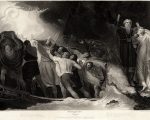

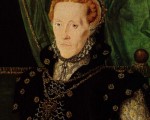
Today, I pay tribute to the amazing Mildred Cecil, Lady Burghley, on the anniversary of her death in 1589, by sharing some facts about her.
Mildred was not only the wife of William Cecil, Lord Burghley, she was an accomplished and influential woman in her own right. A truly fascinating Tudor personality.
[Read More...]
On this day in Tudor history, Lady Margaret Douglas, Countess of Lennox, cousin of Queen Elizabeth I, was buried in a lavish funeral at Westminster Abbey.
Find out about her tomb, and her incredible lineage and links to royals, in today’s video.
[Read More...]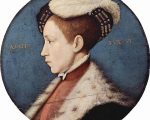
On this day in Tudor history, 2nd April 1552, King Edward VI recorded in his diary “I fell sick of the measles and the smallpox”.
What do we know about his illness and subsequent recovery? What was smallpox like and how was it treated? Did this bout of illness have any bearing on his future health?
Find out, in today’s “on this day” video.
[Read More...]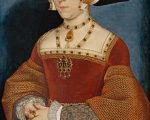
On this day in Tudor history, 1st April 1536, the imperial ambassador passed on information he’d received from two separate sources to his master, Emperor Charles V. The news was regarding Henry VIII and his behaviour towards one of his wife’s ladies-in-waiting, a certain Jane Seymour.
Find out exactly what happened, what Henry and Jane were up to, and how long this had been going on, in today’s video.
[Read More...]
Thanks to all those who came to our live chat event with Wendy Dunn, we discussed lots to do with writing Tudor historical fiction, and my highlight was the discussion on getting the best balance in historical phrasing for speech. Fascinating. For all Full Members who missed the chat, here is the transcript.
[Read More...]
Back by popular demand, after his wonderful talks on King Henry VII, is Nathen Amin! Nathen is author of Tudor Wales, York Pubs, and the bestseller The House of Beaufort, and is currently working on his fourth book, Henry VII and Pretenders to the Tudor Crown.Nathen’s talk is on the Beaufort family and we do hope you enjoy it. Nathen will be joining is in the Tudor Society chatroom on Sunday 28th April to answer your questions on the Beauforts, his books and research.
[Read More...]